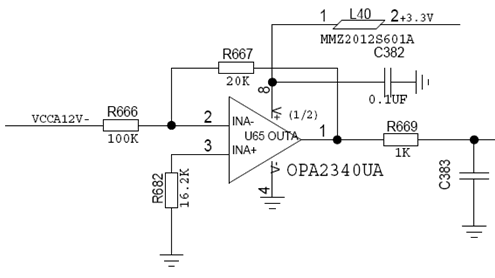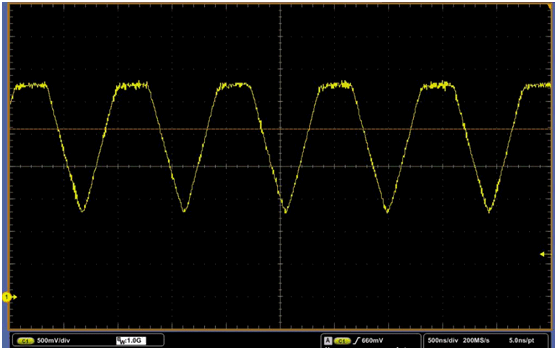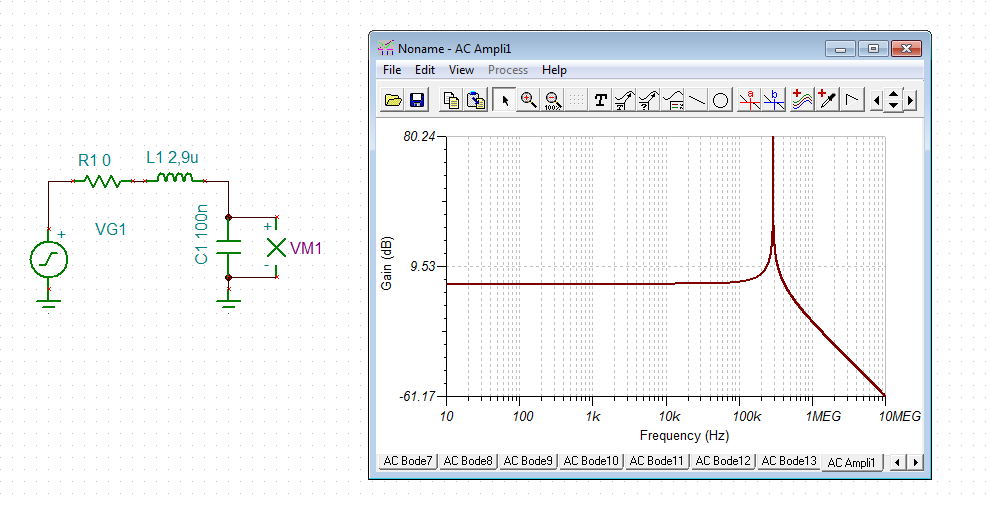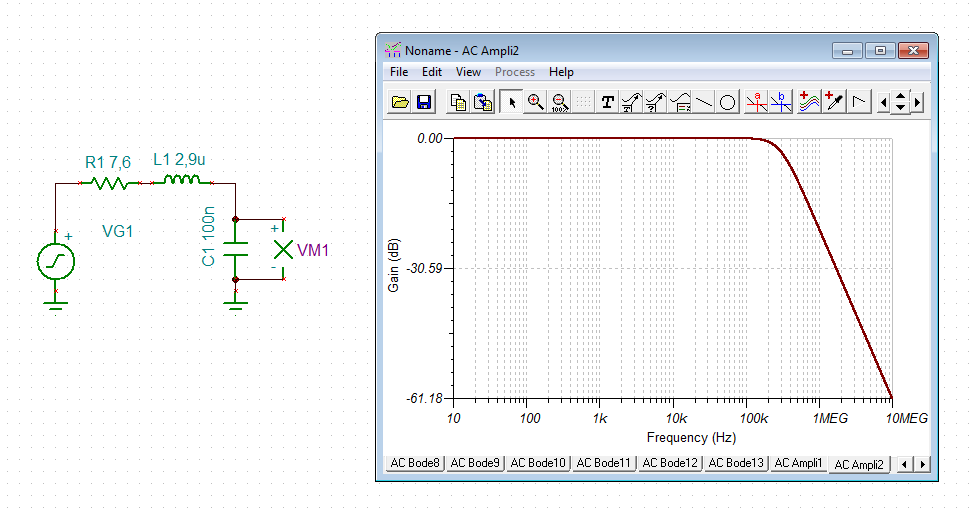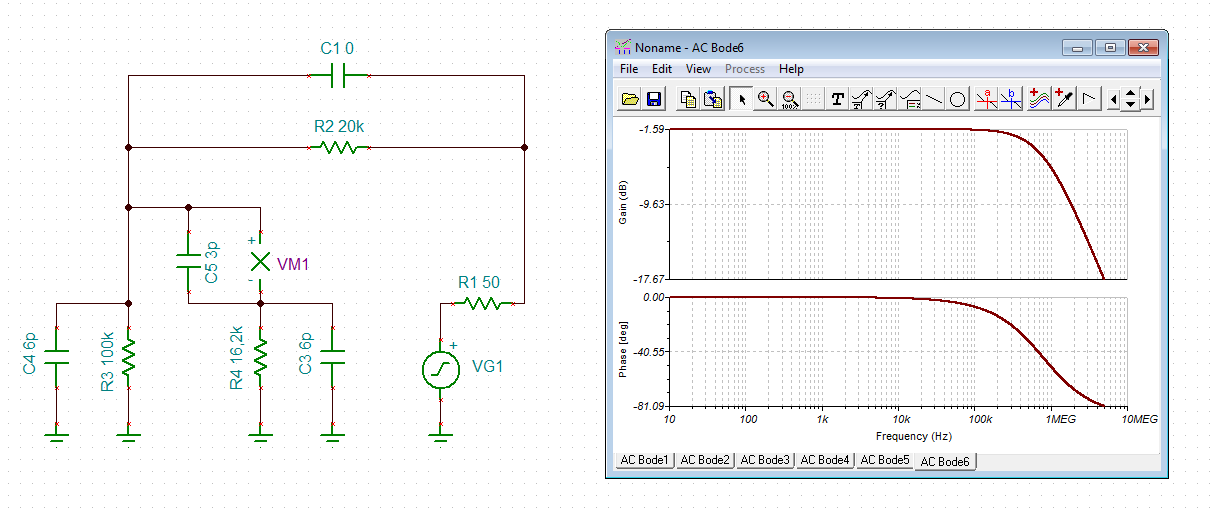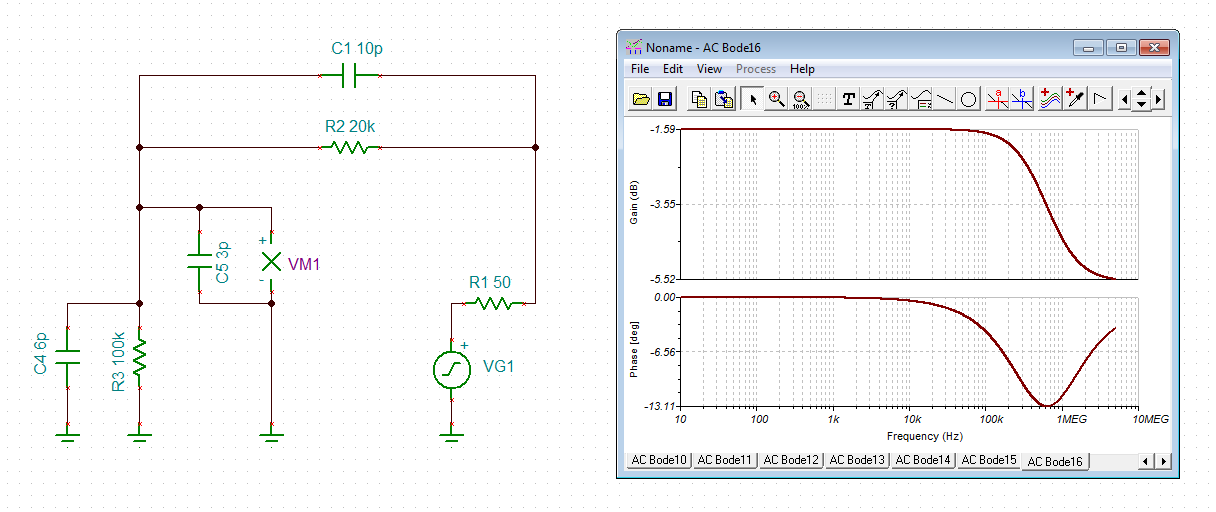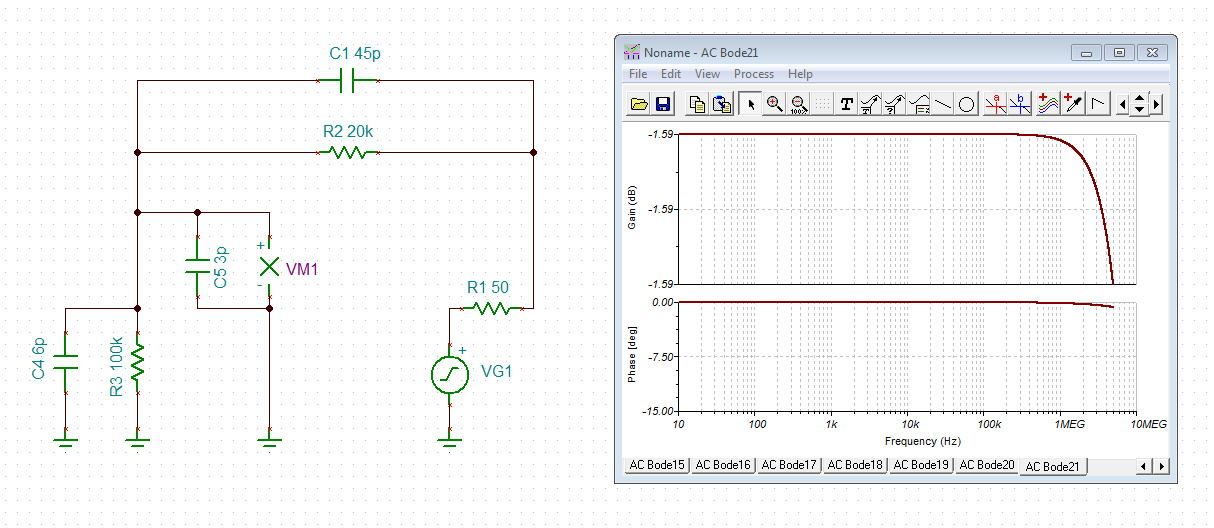Hi team,
My customer meets an instable issue when using our OPA2340. This issue occurs about 1% (4/400) possibility.
The circuit and output waveform are as below, the input is -12V DC, and we want to get a 2.4V DC output.
To exclude the influence from the output, we removed R669 and C383, it's still instable.
We tried the following things:
1. Simulated by TINA, it's stable;
2. Increase the value of R667 and R666 to 100k and 500k, all chips are oscillated.
Do you have any idea what may cause this issue?
Thanks
Cera


